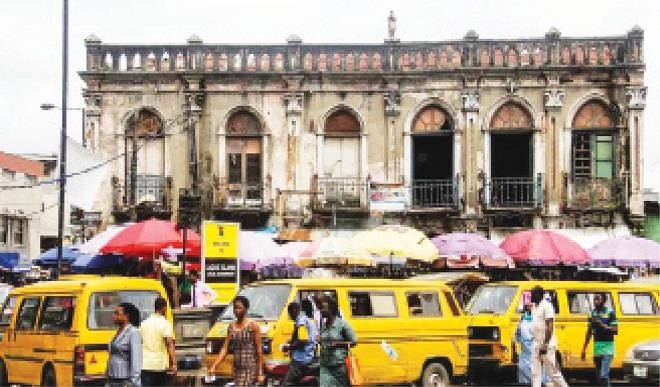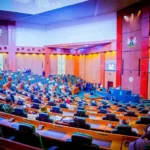
The demolition of Ilojo Bar has split the Omolona Olaiya family, its owners, with members divided over the demolition. And as the federal government, through the Director- General of the National Commission for Museums and Monuments (NCMM), Mr. Yusuf Abdallah Usman, threatened it would be prosecuting the developer who pulled down the treasured edifice, some members of the family in support of the demolition and who apparently contracted the developer for the job, retorted through their lawyer, Olanrewaju Falola, that they had already filed a suit at the Federal High Court, Lagos, against the Commission.
The family members argued penultimate week that they resorted to pulling down the structure as it terribly decayed and became a haven for criminals, and after the NCMM shunned their appeals to wade in and repair it.
As the family, through Falola, argued in a statement, they had observed cracks on the walls of the old building and the roofs were falling off and proceeded to take certain steps to stave off its complete ruination.
First, they claimed, they informed the NCMM of the situation, whose responsibility they said it was to maintain the structure. “But it was not repaired,” the statement said.
Owing to the deteriorating physical status of Ilojo Bar, the family, the statement said, wrote to former president Goodluck Jonathan on June 8, 2010, asking him to delist it as a national monument. But it didn’t get any response.
From here, according to them, they sought the Commission’s approval “to renovate the building to forestall any calamity,” but claimed not to have been given the necessary permission.
The statement added that the Lagos State government through its regulatory agencies then came into the picture, issuing contravention notices on the property. The family members said they brought the notices to the attention of the NCMM, which they accused of still failing to act.
The statement said an integrity test conducted on the monument revealed “the building was no longer safe for habitation.”
The lawyer said: “Thereafter, the Lagos State Building Control Agency (LASBCA) ordered the family to demolish the distressed Ilojo Bar and further warned that failure to demolish same would amount to negligence on the part of the family and the property will be forfeited to the state government.”
The family, he added, was then given a demolition approval, following which it asked LASBCA to bring it down.
“The demolition of Ilojo Bar was done with the express order, instruction and approval of the Lagos State government in the exercise and performance of its statutory duties and for the protection of lives and property,” the family said.
Constructed in 1855 as a relaxation spot of note, Ilojo Bar weathered many storms to become one of the most sought-after masterpieces on the Lagos Island and, indeed, in Nigeria. It was bought by the late Alfred Omolona Olaiya in 1933. But due to its unique architectural design and historical value, the federal government acquired and declared it a national monument, though with a caveat that allows the Olaiya family to live in it.
The NCMM DG, Usman, at a meeting with journalists and a tour of the site of the demolished building, vowed that whosoever that was responsible for the building demolition would be brought to book.
A visibly disturbed Usman said the Commission would, “in line with the powers and responsibility conferred on it by NCMM Act, Cap N19, Laws of the Federal Republic of Nigeria, 2004,” ensure that a criminal case was brought against the culprits, as well as ensure the demolishers paid compensation for their action.
He lamented that Ilojo Bar had been facing demolition threat for some time due to the rising commercial activities around its location before it was finally demolished.
“In October 2015, a member of the family wrote to the Commission informing that one of them was trying to engage a private developer to demolish the monument and clear the place for commercial development. In response to this, a meeting was called with the family members led by Daniel Adewale Olaiya on January 19, 2016.
“The meeting discussed all the issues around the monument, including its legal status, how the structure would be put to use and the grievances of the family members. It was agreed that the status quo of the monument should be left alone, while the family submit its complaints through appropriate official channel. However, nothing was heard from them since then,” Usman said.
Usman said the latest threat to demolish the monument came again on July 2, 2016 “when a developer in collusion with some members of the family mobilized a bulldozer and some armed men with the intent to demolish the structure.”
The Commission, he narrated, got the information about the move and quickly mobilized staff of the Lagos Museum and, in collaboration with Lagos State government, officials accosted the group and frustrated that demolition attempt.
“We subsequently, drew the attention of law enforcement agencies. Still in July, the developer again mobilized to demolish the building, an action which was again rebuffed, this time with the intervention of Honourable Agboola Dabiri, the Special Adviser to the Lagos State Governor on the Lagos Central Business District. And following his intervention, a stakeholders meeting was summoned at the Lagos State Secretariat Alausa, Ikeja, where he (the Special Adviser) undertook to do everything possible to avert the demolition of the monument,” Usman said.
Usman said on Tuesday, August 16, 2016, another stakeholders’ meeting was convened by the Commission with members of the Olaiya family, alongside representatives of the Lagos State Ministry of Arts and Tourism, as well as two representatives of the Brazilian Consulate, Benedita Gouveia Simonetti and Adeniran Arimoro.
He said as part of issues discussed at the meeting, it was agreed that all necessary steps must be taken to safeguard the monument from further demolition threat, while involving law enforcement agencies to monitor development at the site of the building. He added that it was also agreed that a signpost notifying members of the public about the status of the building be erected.
He added the meeting also agreed to revive an earlier plan to organize a gala night to raise funds for the restoration of the monument.
“But to our greatest surprise, on Saturday August 27, 2016, the same developer again mobilized his bulldozer and actually damaged parts of the building. A petition was subsequently written and submitted to the Area Commander of the Nigerian Police (Lion Building), requesting the arrest and prosecution of the culprits, but apparently the police did not find the matter serious enough to detain or prosecute them,” Usman said.
To him, the destruction was a sad statement on the development of Nigerian historical heritage management. He lamented that the demolition had destroyed a masterpiece of the only surviving Brazilian house in Lagos.
“The dastardly act has distorted the eminent position of Lagos in colonial history as the centre where returnee slaves from Brazil built houses in a similar manner of the new architectural fashion when Lagos was created as a colony, thus impoverishing Lagos of its rich architectural urban history and undermining its acclaimed status as a centre of excellence,” Usman said.
Uche Okpa-Iroha, a culture and art promoter, described the development as “nauseating.” Okpa-Iroha wondered why some Nigerians would easily ignore the relevance of such a historical monument unbothered about the consequences.
“The claim that the place has become dilapidated and that the building can collapse at any point in time is not convincing to me and many other professionals in arts, culture and tourism. At a time, the Lagos State government has expressed its desire to diversify its economy to this sector, one wouldn’t have imagined that this would be the step to take. There are bricks and other construction models that could be adopted in preserving the building. Its destruction is certainly not the best,” he said.
Echoing Okpa-Iroha’s anger are the Legacy Group and the Committee on Lagos@50, both of which described the building demolition as “callous.”
In a petition tagged, ‘Murder in Broad Daylight’ the Legacy Group supported the call for the prosecution of those involved in the act. It said it has kick-started a campaign condemning the demolition.
“This is a fight for the sovereignty of the laws that form the basis of this country called Nigeria. Sunday, September 11, 2016 marked a dirty taint on the history of Lagos and Nigeria as a whole. It was the day ‘developers,’ acting in total disregard for the constitution, tore down a beauty that carried immeasurable value for the life and soul of a people. The building was the epitome of the Lagos Brazilian style of architecture brought in by returnee slaves,” the group stated in the petition signed by its president, Desmond Majekodunmi.
Daily Trust on Saturday visited the site of the Ilojo Bar met a woman who identified herself as Folashade Awobuyide and claimed to be a great grand-daughter of the owner of the building. Folashade said that not all members of the Omolona Olaiya family were in support of the demolition.
She added she was living in the building before its demolition, “but I was not even allowed to remove any of my belongings from the building before the developer came with his bulldozer and armed thugs to demolish it. I had to run for my dear life.”
Efforts to reach the developer, who was simply identified as Otunba Arowogbola, were unsuccessful as none of the phone numbers given connected.
Although Usman vowed the Commission would reconstruct Ilojo Bar, mourning art and heritage lovers must come to grips with the reality that the iconic edifice is gone forever. For how can its historic architecture be captured in its stark original form?

 Join Daily Trust WhatsApp Community For Quick Access To News and Happenings Around You.
Join Daily Trust WhatsApp Community For Quick Access To News and Happenings Around You.


